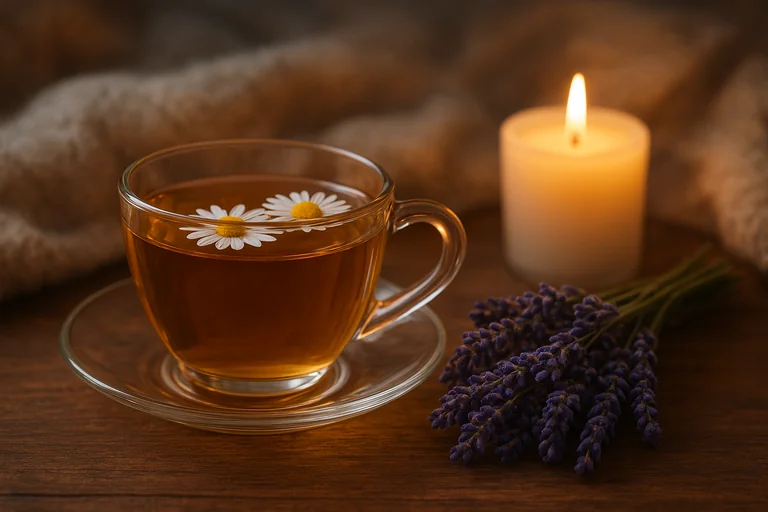A 2 minute assessment to get a personalized mental health or alcohol recovery plan.
Think all beers have roughly the same alcohol content? The difference between a light beer and craft IPA could mean you're drinking twice as much alcohol without realizing it.
What You'll Discover:
- Why beer alcohol content varies from 3% to over 12% ABV depending on the type.
- How drinking craft beers can double or triple your alcohol intake without you knowing.
- What "standard drink" really means and why most beers don't qualify.
- How to calculate exactly how much alcohol you're consuming from any beer.
When you crack open a cold beer, you're probably not thinking about the precise alcohol content or calculating standard drinks. Most people simply enjoy their beverage without considering the science behind what makes beer alcoholic or how different types of beer can contain dramatically different amounts of alcohol.
Or at least, that's what most people assume. In actuality, the beer you're drinking could contain anywhere from 3% to 12% alcohol or even higher, and that variation means you might be consuming far more alcohol than you realize. Two craft beers at a brewery could equal four or five standard drinks. After all, beer companies aren't required to make alcohol content obvious. But in actuality, more recent trends in craft brewing have pushed alcohol levels so high that some beers are closer to wine than traditional beer.
It may be time to pay attention to those ABV percentages on beer labels if understanding how much you're actually drinking is a priority.
What Alcohol by Volume (ABV) Actually Means for Your Drinking
Don't let the simple percentage on a beer label fool you into thinking all beers are basically the same. The difference between 4% and 8% ABV in beer literally means you're drinking twice as much alcohol per bottle.
Many researchers, brewers and health experts will tell you that ABV - Alcohol by Volume - represents the percentage of a liquid that's pure alcohol. Even if a beer tastes smooth and goes down easy, if it's 10% ABV, one-tenth of every sip is pure ethanol. It's particularly misleading with craft beers that mask high alcohol content with complex flavors. For example, a Belgian tripel might taste fruity and light while packing 9% ABV.
Now that you have a better idea what those percentages mean, let's delve further into how different beer types stack up, some of which may be very surprising.
The "Standard" Beer Is 5% ABV, But That's Becoming Less Standard
The undeniable truth is that what we call "standard" beer alcohol content is based on outdated assumptions. There's the traditional benchmark of 5% ABV, as well as the huge variation in what's actually being served today.
What Makes a Beer "Standard"
This is one of the major baselines for understanding alcohol consumption. The National Institute on Alcohol Abuse and Alcoholism defines standard beer as containing 5% alcohol by volume. Research shows most mainstream American beers fall into this range:
- Budweiser: 5% ABV
- Coors Original: 5% ABV
- Miller High Life: 4.6% ABV
- Heineken: 5% ABV
- Corona Extra: 4.6% ABV
The Standard Drink Calculation
Although this 5% benchmark seems arbitrary, it's actually the foundation for public health guidelines. One standard drink equals 12 ounces of 5% ABV beer, which contains about 0.6 ounces of pure alcohol. But here's where it gets confusing - this only applies to beers at exactly 5% ABV. The math changes dramatically with different alcohol percentages:
- 12 oz at 4% ABV = 0.8 standard drinks
- 12 oz at 6% ABV = 1.2 standard drinks
- 12 oz at 8% ABV = 1.6 standard drinks
- 12 oz at 10% ABV = 2.0 standard drinks
Why This Standard Matters Less Now
After decades of 5% being the norm, the beer landscape has shifted dramatically. That's because craft brewing and consumer preferences have pushed alcohol content in both directions.
The variety now includes:
- Session beers at 3-4% ABV
- Traditional lagers at 4-5% ABV
- IPAs at 6-8% ABV
- Double IPAs at 8-10% ABV
- Imperial stouts at 10-12%+ ABV
Worried you're drinking more than you think? The proliferation of higher-ABV beers means you probably are.
Light Beers Aren't As Light As You Think
Many people are surprised to find that "light" beer doesn't mean significantly less alcohol. It's now believed that most light beers contain 4.2% ABV - only slightly less than regular beer because:
- The focus is calorie reduction, not alcohol reduction
- Brewers maintain alcohol for flavor and mouthfeel
- Marketing emphasizes "light" calories, not light alcohol
- Consumer expectation is for similar effects
The Serving Size Problem
Another serious issue with beer alcohol content is that serving sizes vary wildly. Even if you know the ABV, you need to account for volume:
- Standard bottle/can: 12 ounces
- Pint glass: 16 ounces
- Tall boy can: 16-24 ounces
- Bomber bottle: 22 ounces
- Growler: 64 ounces
The issue of serving size compounds the ABV problem. There are far too many people drinking 16-ounce pints of 8% beer thinking it's "one drink," but it's actually 2.1 standard drinks.
The Other Undeniable Truth - Craft Beers Have Changed Everything
The other major shift in beer alcohol content comes from the craft beer revolution. You may think you're having "a couple beers," but if they're craft beers, you could be consuming the equivalent of four or five standard drinks.
Not all craft beers are high in alcohol, but the trend significantly leans toward stronger beers compared to traditional options. Very few craft breweries focus on 4-5% ABV beers. More often they're pushing boundaries with imperial versions and experimental brews.
What might be most troubling is that alcohol content in craft beer isn't always obvious from taste or appearance. Other factors like hop bitterness, malt sweetness, and carbonation can mask high alcohol levels.
Different Beer Styles and Their Typical Alcohol Ranges
Now with thousands of beer styles available, understanding typical alcohol ranges helps you make informed choices. But more importantly, knowing these ranges prevents surprises when your beer is stronger than expected.
What's most concerning about beer variety is how dramatically alcohol content varies by style. Lagers and pilsners typically stay in the 4-5% range. Essentially, these are your "standard" beers designed for regular consumption. That is why they've remained popular for decades.
This is obvious with traditional styles, but modern interpretations push boundaries. IPAs now commonly reach 7-8% ABV, with double IPAs hitting 8-10%. The more hops used, the more malt needed for balance, driving alcohol higher. It will affect you differently than lower-alcohol options.
The takeaway is that beer style directly correlates with alcohol content, and choosing high-alcohol styles means consuming more alcohol even if you drink the same number of beers.
The good news is that lower-alcohol session beers are becoming more available, offering full flavor at 3-4% ABV.
How Your Body Actually Processes Different Beer Strengths
Clearly, drinking higher-alcohol beer affects you differently than standard beer. But understanding the physiological impact reveals why ABV percentages matter so much.
In addition to the obvious intoxication differences, higher-alcohol beers affect hydration, sleep quality, and hangover severity. Your liver processes alcohol at about one standard drink per hour. But if your "one beer" contains two standard drinks, you're getting ahead of your body's processing ability.
Let's look at a realistic scenario. Imagine you're at a brewery having three IPAs over three hours. If those IPAs are 8% ABV and served in 16-ounce pints, you've consumed 6.4 standard drinks - not three. Your body needs over six hours to process this amount, not the three hours you spent drinking.
Another key consideration is that higher-alcohol beers cause faster dehydration. Alcohol is a diuretic, and stronger beers amplify this effect. You lose more fluids per drink with high-ABV beers, contributing to worse hangovers and longer recovery times.
NEED TO KNOW: A 16-ounce craft beer at 9% ABV contains 2.4 standard drinks. That single pint exceeds the daily recommended limit for women and matches the limit for men.
Calculating Exactly How Much Alcohol You're Really Drinking
If you want to track your actual alcohol consumption, you need to do the math based on both ABV and serving size. The formula is straightforward but often eye-opening.
To calculate standard drinks: (Ounces × ABV) ÷ 0.6 = Standard drinks
Here's what common beers actually contain:
- 12 oz light beer (4.2% ABV) = 0.84 standard drinks
- 12 oz regular beer (5% ABV) = 1.0 standard drinks
- 16 oz IPA (7% ABV) = 1.87 standard drinks
- 12 oz double IPA (9% ABV) = 1.8 standard drinks
- 22 oz bomber (10% ABV) = 3.67 standard drinks
These calculations reveal how quickly drinks add up. A night of "three beers" could range from 2.5 to 5.5 standard drinks depending on your choices. This variation explains why some nights hit harder than others, even with similar consumption patterns.
The math becomes even more important when considering weekly consumption. If you regularly drink craft beers, you might be consuming 50-100% more alcohol than you realize based on drink counting alone.
Making Smarter Choices When You Know the Numbers
Understanding beer alcohol content fundamentally changes how you approach drinking. If you know that imperial stout contains 2.5 times the alcohol of a light beer, you can adjust consumption accordingly.
Session beers offer a solution for extended drinking occasions. At 3-4% ABV, these beers let you enjoy multiple drinks without excessive alcohol intake. They're specifically designed for "sessions" of drinking without getting overly intoxicated.
For special occasions, those high-ABV beers can be savored like wine or spirits. A 12% barleywine deserves the same respect as a glass of wine - sip it slowly and appreciate the complexity that comes with higher alcohol content.
Pay attention to how venues serve beer. Many craft beer bars offer smaller pours for stronger beers - 8 or 10 ounces instead of full pints. This isn't stinginess; it's responsible service that acknowledges the higher alcohol content.
Consider alternating between different strength beers or including non-alcoholic options. Starting with higher-ABV beers when you can taste them best, then switching to session beers maintains the social aspect while moderating intake.
Concerned about how much alcohol you're actually consuming?
If you're realizing your beer consumption involves more alcohol than you thought, if you want better control over your drinking, or if those craft beer sessions are adding up, support is available. Choose Your Horizon offers 100% online, confidential access to Naltrexone treatments that can help you moderate consumption regardless of what type of beer you prefer.
Interested in understanding your relationship with alcohol better? Take the online Alcohol Use Assessment to find out if you're drinking more than you realize and explore options for taking control of your consumption.




